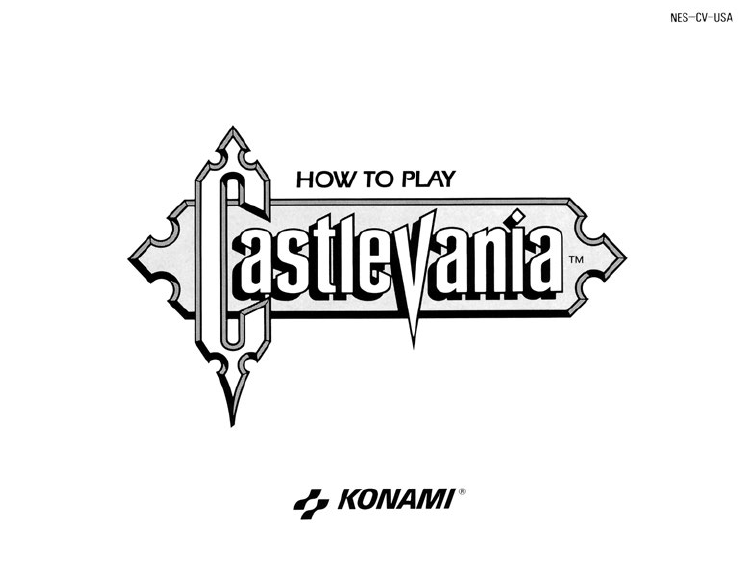(AfroGamers.com) The first game I ever played was Castlevania, a side-scrolling action game where you killed all kinds of monsters and demons leading up to a final showdown with Count Dracula. I was probably four when my cousins let me play on their OG Nintendo, so there was no way I was fighting Dracula. That fight wouldn’t go down until 2000, 11 years later and features many deaths on my part.
That’s probably why my cousins let me play something more at my pace after I lost so much with the Super Mario Bros/Duck Hunt two-in-one cart. At any rate, it was while thinking about these games that I realized something about the games themselves and the instruction manuals: they really encouraged players to use their imaginations to fill in the story.

The Graphics Helped a Little with the Story
First off, I’m talking about the Nintendo Entertainment System on this front. The graphics were fine for the early 80s but the shapes sometimes didn’t depict any kind of enemy. It could be a square that shot smaller squares at the player but have the name “dog tank” but resembles neither a dog or a tank.
This is obviously on individual developers but the NES had mechanical limitations that became obvious in the late 80s when the Sega Master System dropped. The thing is that you could be looking at the game on your CRT television, tuned to channel three, with the audio/video jacks connected and you weren’t getting the most defined scene most of the time.
Something like Super Mario Bros had a little more going on while Super Mario Bros 3 was working with a lot on the console. It’s important to note that those are first-party titles and a console manufacturer will always put the most effort in making its own games look good on their own consoles.
With that said, even Nintendo’s SMB and Zelda games didn’t explain much on screen. Hell, the only scrap of story in SMB was Toad telling you that Princess Peach was kidnapped by Bowser/King Koopa and that the castle was a line. Sure, you saved another Toadstool but the princess was gone-gone again and there seems to be a pattern.
The Instruction Manual Often Helped Less
The late 80s and early 90s video game manuals could help less than the game graphics. Sure, they really filled out how some characters are supposed to look compared to what the console could do and that could make your imagination run wild while playing, but if you were interested in knowing more about the world you were entering or why you were here, you were in for a rude awakening.
I used to sit and read instruction booklets with my younger brother for every game we got that came with one. The Super Nintendo/PlayStation era of games and beyond gave you all the deets on what you were getting into. Meanwhile, the Nintendo/Genesis/Gameboy/Game Gear era of games left some surprises.
You’d start the game up, hit START, and boom! You were at the start of the stage with a timer going for some reason. Let me tell you: I hate being timed and always felt that timers were stupid. However, there you were at the start of SMB with a goomba coming toward you. Fortunately, that is a run, jump, and shoot title, it’s not like you’ll be making any flashy or difficult actions outside of the narrow gap run.
Castlevania also just kind of dropped you off at the gates of Dracula’s castle. In Alex Kidd, you had some idea about what you were supposed to do but Sega just dumped you at the start of a stage and sent you on your way as if the game art explained anything.
Also, it was even worse if you checked out the game from a local video store because oftentimes they didn’t even come with the manual. Going back to the limitations of consoles at the time, very few featured dialogue boxes never mind voice acting. You could steamroll level after level spanking boss after boss and have zero idea as to what’s going on or why Robotnik wants the Chaos Emeralds or what Bowser is going to do with Princess Peach.
As a player, you just mastered the mechanics and went through levels.
Game Manuals Today
Looking at it now, game manuals have been replaced by the tutorial and let me tell you: they’re too damn long. Tutorials on mobile, console, and PC can run for a bit before you can actually play the game. It actually makes me miss the old manuals since it wasn’t a mix of “learn this mechanic” and story cut scenes which can also be pretty lengthy.
Part of this is developers really wanting to make use of the cut scene design and writing that went into the game. The other part is that as game dev technology goes on, features become more complex and their implementation must be explained. Not only that, they have to be explained in a way that doesn’t break the player’s immersion in the game. There’s definitely a lot to consider from developer choices as far as tutorial length and the reasons.
What were some of your memories from the game manual days? Also, what do you think of tutorials in games today? Do they run too long or could they be longer? Let us know in the comments!
Staff Writer; M. Swift
This talented writer is also a podcast host, and comic book fan who loves all things old school. One may also find him on Twitter at; metalswift.

















Leave a Reply